Brick- this is an excellent building material, widely used at all times for the construction of all kinds of buildings and structures. Judging by the numerous excavations of ancient buildings from traditional red bricks, it can be argued that this material has served people for many centuries by faith and truth. The modern brick house is a house with an attractive exterior appearance, good indicators of practicality and durability, excellent heat and sound insulation characteristics.
Content
Brick red: characteristic and scope
Red brick, received its name due to a special manufacturing technology based on firing, is a universal building material of standard rectangular shape with even, clear edges.
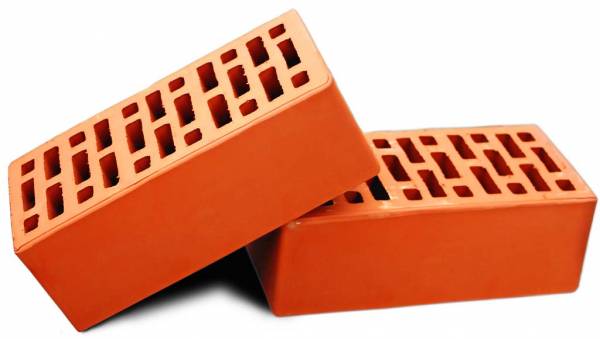
Its unique ability to withstand the physical, chemical, atmospheric and other effects of the environment led to increased attention in the construction industry, where it is used in virtually all types of construction works: outdoor and facing events, interior decoration and construction of various structures, which then do not require special care.

Of course, the red brick deserves respect and love as professional builders, and ordinary citizens, not only because of its appearance, but also performance characteristics: high strength and durability of brick products allow us to speak about the exceptional safety and economic feasibility of such houses were built of the material.
Separately, mention should be made of the insulation characteristics of red brick: in the cold season, it copes well with the task of keeping the heat in the room, and in a hot period conserves coolness. In addition, for buildings from such material, excellent sound and thermal insulation characteristics are characteristic. That, undoubtedly, positively affects the reputation of red brick and is an important reason for choosing this particular building material.
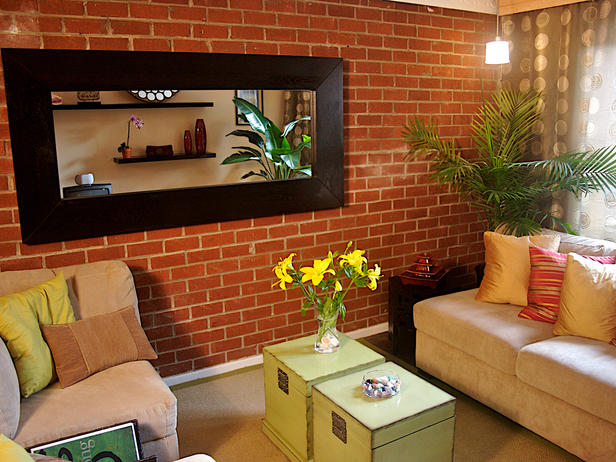
Working with a brick is simple to impossible, does not carry in itself special secrets and is accessible to a wide circle of masters and simple owners of suburban areas. For the construction of high-quality brick masonry, the performer must correctly make all measurements of the future design, calculate the number of necessary materials, purchase a brick and a solution of good quality. It should be noted that on average 50-55 standard-sized items are required to create a masonry with an area of 1 m². The brick facade, executed according to all the rules and building codes, rarely needs repair, and due to the variety of color solutions and product configurations, the owner will be able to implement the most extraordinary and unpredictable projects.
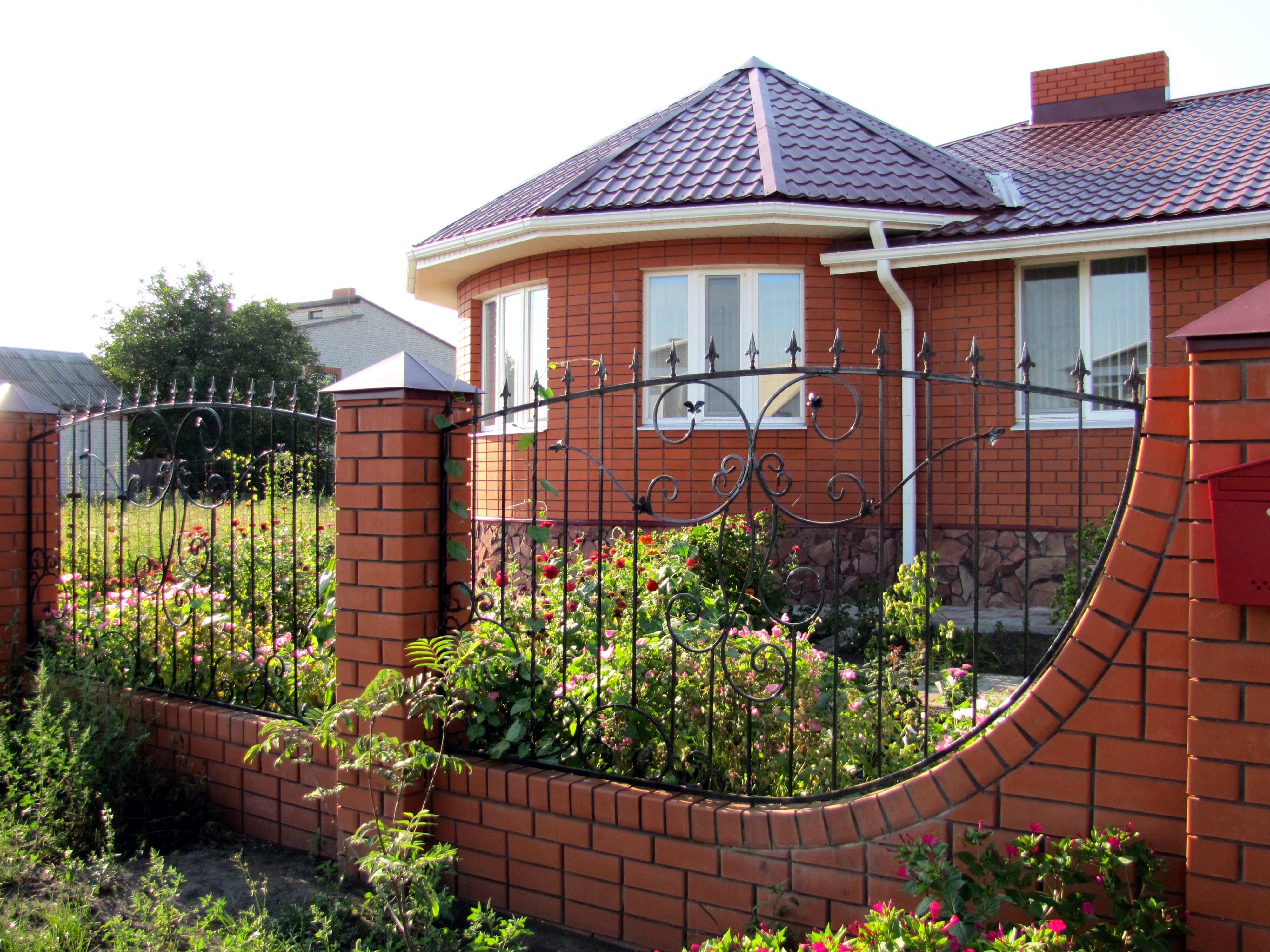
Manufacturing technology
Red brick has received its unique performance characteristics through a special manufacturing technology, which includes several processing steps:
- thorough grinding and mixing;
- addition of ingredients and molding;
- drying and roasting procedure.
So, at the beginning of the process, the clay mass is crushed, cleaned of unnecessary components and thoroughly mixed until a uniform consistency is formed. As a result, a mixture appears that looks like dust, into which the necessary components are added and standard-sized bricks are formed. The next step is to remove excess moisture. For this, the products are dried. It is very important to make sure that the moisture evaporates evenly from the surface and from the inside of the brick. Otherwise, uneven drying can lead to cracking and deformation of products, as well as rapid destruction of the masonry.
At the final stage of the manufacturing process, products are fired. The melting point, reaching 800 ° C, brings the building material to the desired condition, tightly connecting all the ingredients together.
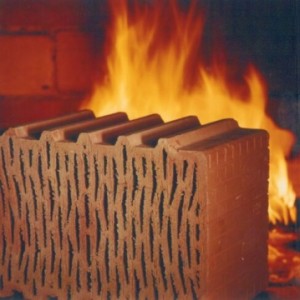
Correctly executed technology of manufacturing and roasting will allow to receive a qualitative and reliable brick with sonorous and thin sound at impact on it. It is easy to recognize the appearance of the burned brick: the melted edges and the almost black core are quickly evident. This product is strictly prohibited for use in the construction of load-bearing structures. The truth is not in a hurry to throw it away: such a building material is still suitable for carrying out foundation work.
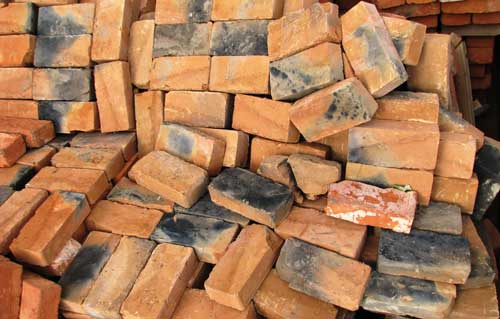
The question of choosing brick products should be taken very prudently and seriously, paying attention to the condition of the site for construction, the purpose of the future facility, the budget that you have, as well as the basic characteristics of the brick. At this stage, you should not confuse anything and choose exactly the type of wall material that best suits the performance and quality characteristics for your construction. For example, if you use a facing brick for your future architectural structure, it soon turns out that the house is unbearably cold and uncomfortable. And all because the construction material was incorrectly chosen, in this case - a brick.
Types of red brick
Let's note that the construction market today represents more than 5000 various combinations of color and textural solutions, dimensions and configurations. Here are the most common classifications.
Depending on the purpose:
1. Ordinary brick, designed for the erection of external and internal walls under the lining, for partitions and enclosing structures. It has a rough surface and low resistance to environmental influences.
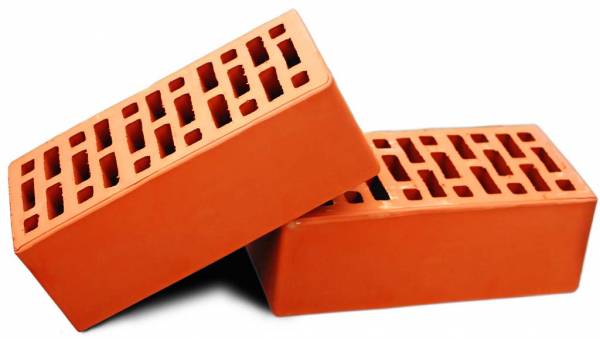
2. Facing brick with a high-quality and attractive outer surface that withstands any external impact. Perfectly suitable for outdoor work.
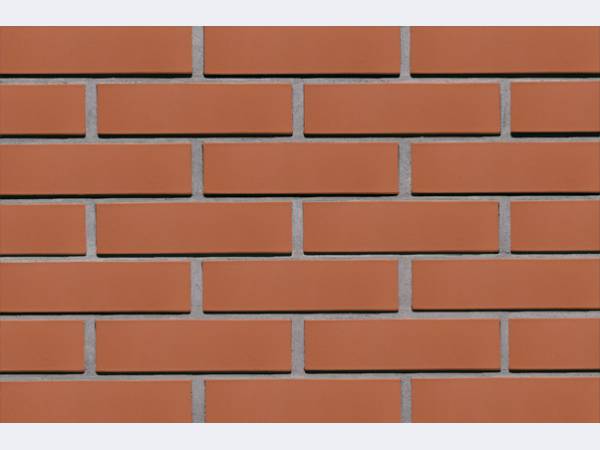
3. Special brick (for example, with high refractory or acid-resistant properties), intended for the construction of chimneys and furnaces.
Depending on the size of the bricks are:
1. Single (standard), Used for external and internal works, characterized by the presence of a smooth or rippled surface, have dimensions of 250x120x65 mm and a void volume of up to 70%. Average consumption per 1 square meter is 52 pieces.
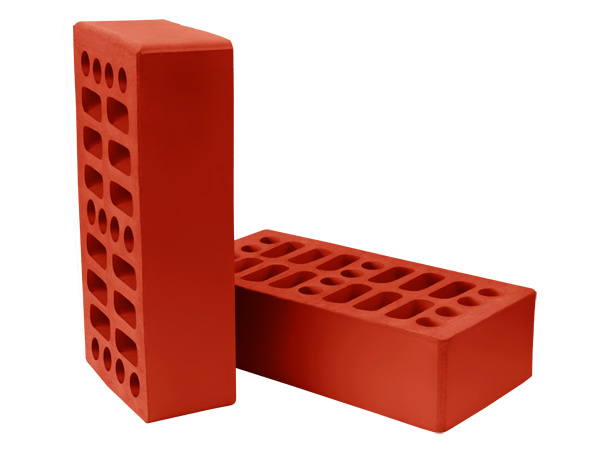
2. One-half (thickened),allowing significantly reduce labor costs, mortar, as well as time spent on the implementation of brickwork. Has a grooved surface and dimensions of 250x120x88mm with a void volume of up to 70%. Average consumption per 1 square meter is 41 pieces.
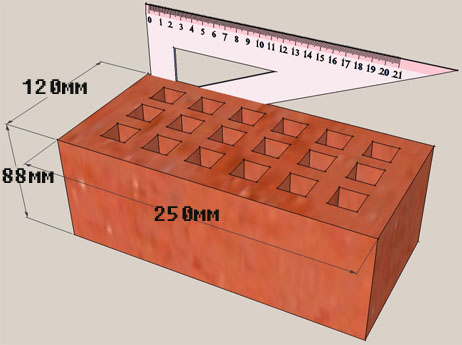
3. Double,having a relief surface and dimensions of 250x120x140 mm with a void volume of up to 70%. The average consumption per 1 square meter is 26 pieces.
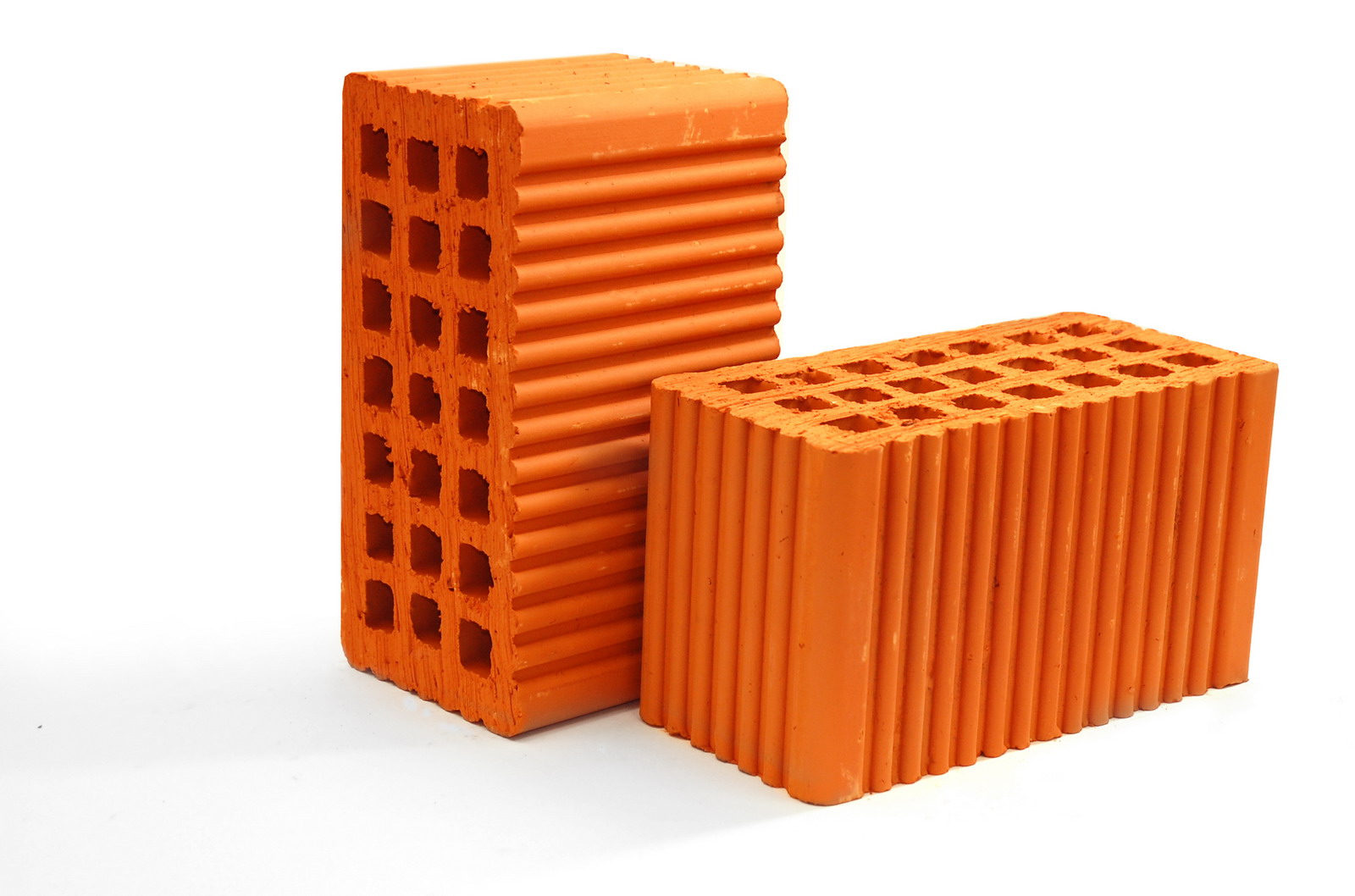
4. Non-standard(products of European sizes, restoration, large-format, quadruple and others).
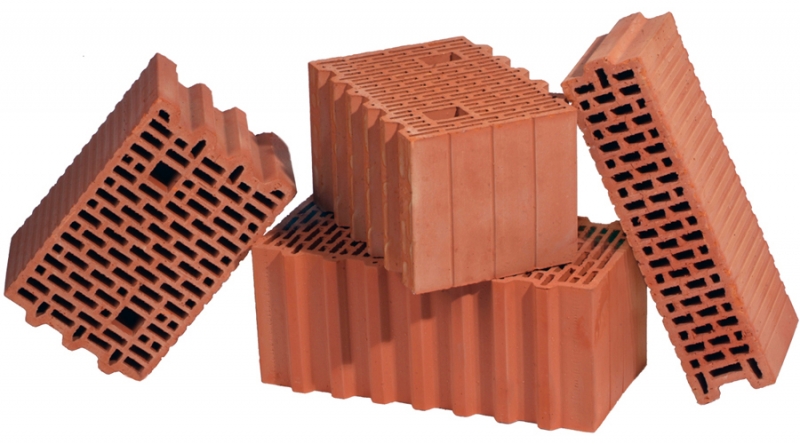
Depending on the structure:
1. Hollow bricks with an opening number of more than 50% and a density of up to 1500 kg / m³. Such products have low thermal conductivity and lower weight, which significantly reduces the load on the foundation and the thickness of the walls. It is successfully applied at finishing and external works.
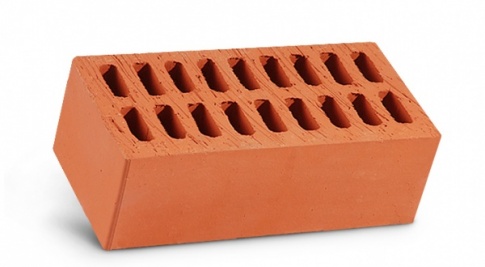
2. Full bricks do not have any holes. They are characterized by an attractive but rough surface, which is to be plastered, with excellent thermal insulation properties and good resistance to external influences. Universal solid bodies are ideal for the erection of columns, walls, socles and foundations.
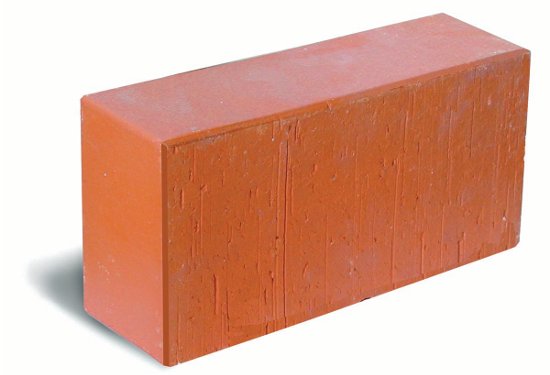
Choose a red brick
Buying a red brick is a responsible process, because the structures you plan to build out of this wall material should serve you more than one year, be attractive and practical.
When choosing brick products, in addition to the price, attention should be paid to the following performance characteristics that these or other modifications may possess:
- Strength or brand of the product;
- Frost resistance;
- Water absorption;
- Thermal conductivity;
- Fire resistance.
When buying red brick products, quality can be assessed visually. So, if the color of the core is more saturated than the edges, then you have a high quality brick. Check whether the dimensions and shapes are correct, exclude curvatures and cracks. The edges should not contain chips, and the product itself should not have calcareous inclusions.
You can also check the quality by force. If, during the impact, a ringing sound is heard and the brick splits into 2-3 pieces, this indicates a high quality of the wall material. Find out more about brick products from the video on youtube.



















